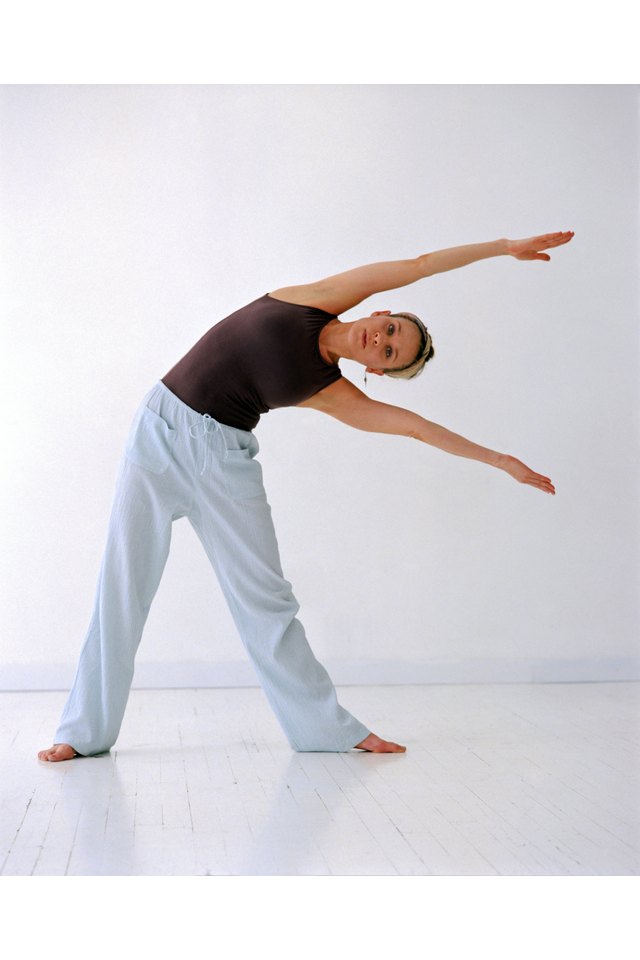Negatives of Working Out Your Obliques

If you don’t want to develop a wider waist, reduce your flexibility or increase risk of injury, you’ll want to know how to avoid the potentially negative consequences of working out your obliques. Also known as side abdominals, obliques are the pair of external and internal muscles located on both sides of your abdomen enabling you to bend side-to-side and twist at the waist. While there are negatives associated with overdeveloping your obliques, it is possible to attain positive results with exercises that build core strength supporting functional movement and facilitate the goal to have flat abs and a smaller waistline.
Wider Waist
External obliques are upper muscles on your sides, and the internal obliques are underneath them, crossing diagonally near the side of your abdomen. “Natural Bodybuilding" author John Hansen explains you should be careful not to overdevelop the lower obliques, which tie into the waistline because building these muscles can make your waist wider, Bodybuilding researcher Mike Hajoway also asserts that doing weighted oblique workouts tends to thicken the circumference of your waistline instead of tapering it.
Increased Core Girth
If your mid-section becomes more muscular from overtraining obliques and other abdominal muscles and you have any excess body fat, your entire abdominal region can project a barrel-like, distended appearance, explains neurophysiologist Chad Waterbury. To create a lean, defined torso, refrain from training your obliques with weights, especially if you’re already engaging them when performing upper-body workouts or lower-body squatting exercises.
Detracts From V-Taper
The V-taper is the aesthetically pleasing appearance of wide shoulders, a small waist and proportionate legs. Doing exercises such as side bends and twists that build oblique muscles can make your waist thicker and prevent you from attaining a V-tapered physique, according to champion bodybuilder Karen Sessions.
Less Flexibility
Since obliques are used in any movement in which your torso bends laterally or twists, overdeveloping them can impede trunk mobility and increase the risk of strains and tears in those muscles, explains personal trainer Tom Braider. Any weighted core exercises are especially risky since full range of motion is needed in your core and training with weights can decrease agility.
Workout Tips
Exercises you can include in workouts to build core strength and get flat abs without experiencing negative consequences of training oblique muscles include reverse crunches, planks and stomach vacuums.
To perform a reverse crunch, lie on your back with arms alongside your body and legs straight. Pull your knees into your chest while rolling your hips up off the floor. Squeeze your abs at the top of the movement and slowly lower down to the starting position. Aim for three sets of 12 to 15 repetitions.
To perform a plank, assume a lateral position face down on the floor, balancing on your elbows and toes. Keep your body in a straight line with your elbows directly under your shoulders and tighten your abdominal muscles for at least 30 seconds. Repeat at least three times.
The stomach vacuum technique uses isometric contractions to reduce your mid-section. Start by exhaling and then inhale, pulling in your stomach as if you were trying to zip up a pair of tight pants. Exhale and repeat a few times daily.
References
Resources
Writer Bio
Bari Auerbach writes a fitness column and has won trophies in fitness shows. Since graduating from Florida International University in 1984 with a degree in communications, she has written for national clients; interviewed dignitaries and celebrities for magazines; and has covered topics including business, politics, fashion and food.
